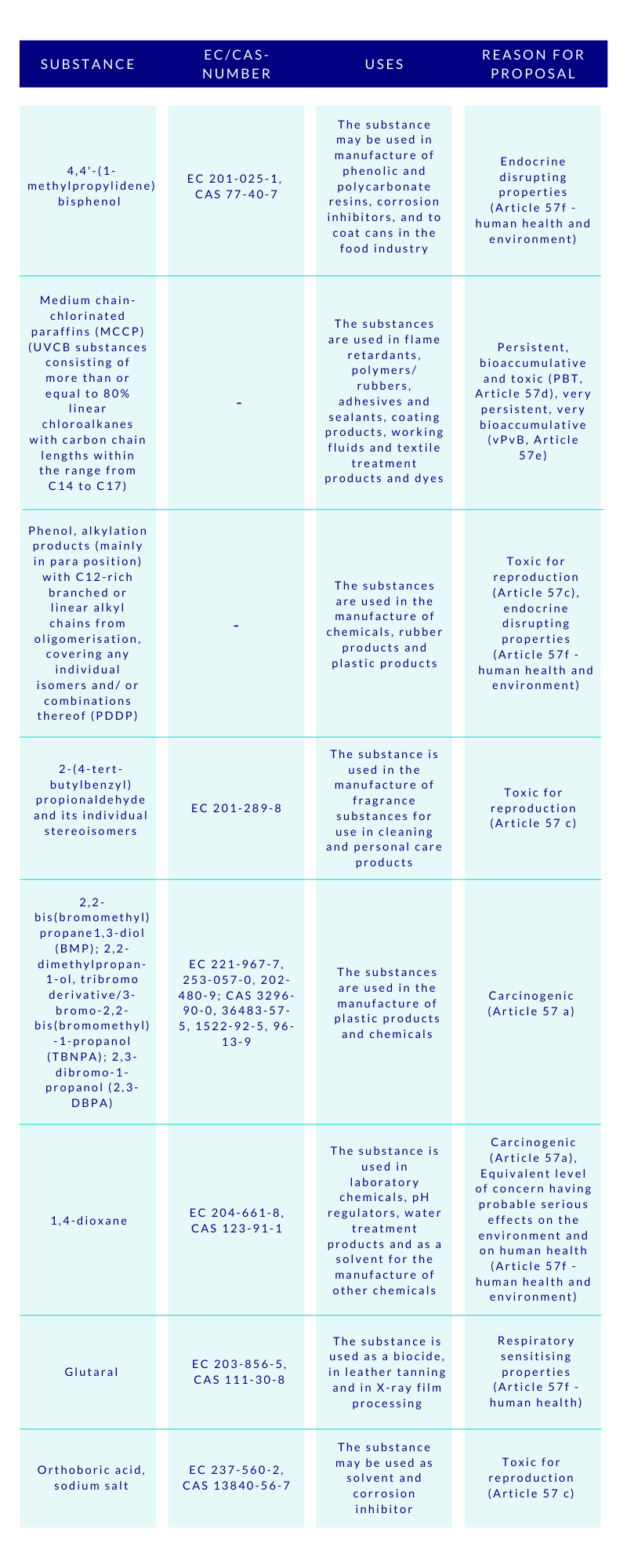
ECHA has added eight new entries to the Candidate List of substances of very high concern on 8 July 2021. Substances of Very High Concern (SVHC) may have serious and often irreversible effects on human health and the environment. There are currently 219 substances on the SVHC Candidate List.
Newly added substances are used in consumer products such as cosmetics, scented articles, rubber, textiles, solvents, flame retardants or to manufacture plastic products. Most of the substance have been added to the list due to their hazardous properties to human health.
Hazardous chemicals added to the Candidate List

Obligations related to SVHC
Companies have legal obligations if a substance included in the Candidate List is present in a concentration above 0.1% w/w. Obligations include:
- Providing Safety Data Sheets for substances on their own and substances in mixtures containing SVHCs
- Requirement to notify ECHA under REACH if an article contains a SVHC
- Requirement to inform customers and consumers under REACH if an article contains a SVHC to allow safe use of the article
- Requirement to notify ECHA under the Waste Framework Directive (SCIP Database) about articles containing SVHCs
Companies that are importing, producing, selling or using substances, their mixtures or articles (components, materials) containing SVHCs should keep an eye on the substances added to the Candidate List. Substances are regularly being added to the list. It is also recommended for companies to start looking for substitutes for the added substances already. Substances on the Candidate List may also be placed on the Authorization List in the future, which means that continuing the use would need a permission.
Do you need help with chemical management?
Our experienced chemical consultants will assist you in meeting your chemical requirements. Furthermore, our Ecobio Manager SaaS-service will help you manage your chemicals and ensure compliance with global regulations. You can watch our webinar “Chemical Management and Risk Assessment Obligations” here. You can find all of our webinars here.
Interested? Contact us today!
Contact: info@ecobio.fi
Text: Mikael Hirn
Picture: Shutterstock
References:
ECHA: Candidate List updated with eight hazardous chemicals.




